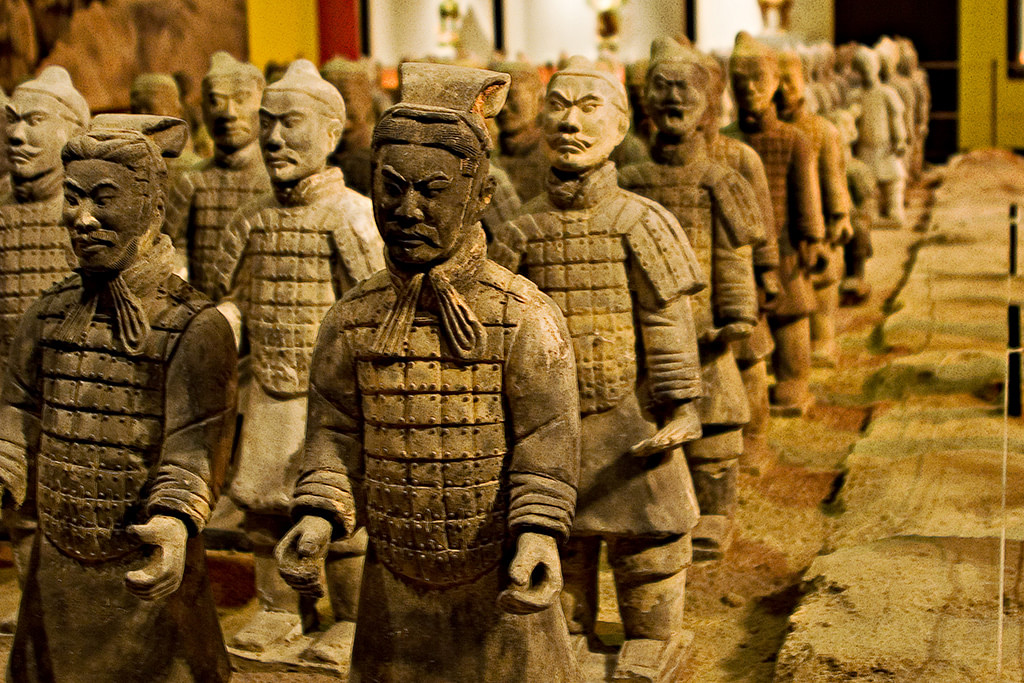The Terracotta Army stands as one of the most awe-inspiring archaeological discoveries of the modern era, offering a glimpse into the grandeur and military might of ancient China. Crafted over two millennia ago to accompany the first emperor of China, Qin Shi Huang, into the afterlife, these remarkable terracotta sculptures have captivated the world with their sheer scale, intricate details, and historical significance. In this article, we embark on a journey to explore the origins, history, and enduring legacy of the Terracotta Army, shedding light on its significance as a testament to the ancient civilization’s cultural and artistic achievements.
Origins and Discovery: The story of the Terracotta Army begins over two thousand years ago, during the reign of Qin Shi Huang, the visionary ruler who unified China and established the Qin Dynasty. In his quest for immortality and eternal power, Qin Shi Huang commissioned the construction of a vast mausoleum complex, complete with an army of terracotta warriors, chariots, and horses. This formidable army, crafted from clay and meticulously sculpted by skilled artisans, was intended to serve as the emperor’s guardians in the afterlife.
The existence of the Terracotta Army remained shrouded in mystery for centuries until its serendipitous discovery in 1974 by a group of local farmers in Lintong County, Shaanxi Province. While digging a well near the emperor’s tomb mound at Mount Li, the farmers stumbled upon a remarkable archaeological treasure—the life-sized terracotta figures of soldiers, meticulously arranged in military formation. This extraordinary find sparked a flurry of archaeological investigations, uncovering one of the most significant archaeological sites in the world.
Architecture and Design: The Terracotta Army comprises thousands of individual figures, meticulously crafted to depict the soldiers, officers, charioteers, and horses of Qin Shi Huang’s army. These terracotta sculptures vary in height, uniform, and hairstyle, reflecting the hierarchy and diversity of the ancient Chinese military. The figures were arranged in vast underground pits, strategically positioned to protect the emperor’s tomb from potential intruders.
The craftsmanship and attention to detail exhibited in the Terracotta Army are nothing short of remarkable. Each figure is unique, with distinct facial features, expressions, and weaponry. Scholars have identified various types of warriors, including armored infantry, cavalrymen, charioteers, archers, and generals, each fulfilling a specific role within the army. The terracotta horses, adorned with elaborate harnesses and trappings, add to the realism and grandeur of the ensemble.
Symbolism and Significance: Beyond their military function, the Terracotta Army carries profound symbolic significance in Chinese history and culture. As guardians of the emperor’s tomb, these silent sentinels symbolize loyalty, duty, and the power of the imperial state. They also reflect the ancient Chinese belief in the afterlife and the importance of honoring and preserving one’s legacy for eternity.
The discovery of the Terracotta Army has provided invaluable insights into ancient Chinese society, technology, and military strategy. The meticulous craftsmanship and sophisticated organization of the army attest to the advanced state of Chinese civilization during the Qin Dynasty. Moreover, the presence of non-military figures, such as acrobats, musicians, and officials, offers a glimpse into the diverse cultural life of the time.
Preservation and Conservation: Since their discovery, efforts have been underway to preserve and protect the Terracotta Army for future generations. Archaeologists have employed advanced techniques and technologies to excavate, document, and study the artifacts while ensuring their long-term preservation. Conservation efforts have focused on stabilizing the fragile terracotta figures, protecting them from environmental factors, and mitigating the risk of deterioration.
The Terracotta Army stands as a testament to the ingenuity, craftsmanship, and artistic vision of ancient China. From its humble origins as a funerary tribute to the first emperor, it has emerged as a global icon of cultural heritage and archaeological excellence. As we continue to unravel the mysteries of this ancient wonder, the Terracotta Army remains an enduring symbol of China’s rich history and enduring legacy.
